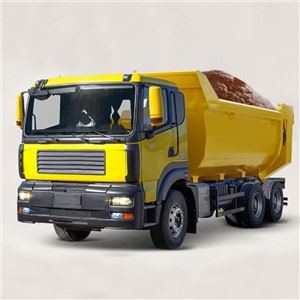How Many Gallons is a Tanker Truck? A Complete Guide

Introduction
Tanker trucks play a vital role in our economy, transporting liquid goods such as fuel, chemicals, and food products across long distances. Understanding the capacity of these trucks can help businesses in logistics, planning, and compliance with regulations. One of the most common questions is, “how many gallons is a tanker truck?” In this comprehensive article, we will delve into the various types of tanker trucks, their capacities, and practical considerations for businesses and individuals alike.
What is a Tanker Truck?
A tanker truck is a vehicle designed to transport liquids across various distances. These trucks come in various shapes and sizes, and their capacities can range significantly based on their intended use. From delivering gasoline to carrying milk, the design and construction of a tanker truck fundamentally depend on its specific purpose.
Types of Tanker Trucks
- Oval Tankers
- Circular Tankers
- Multi-compartment Tankers
- Specialized Tankers (e.g., food-grade, chemical tankers)
How Many Gallons Does a Tanker Truck Hold?
The capacity of a tanker truck can vary widely, typically ranging from 5,000 to 10,000 gallons. However, some tanker trucks may hold much larger volumes. Below is a table summarizing the different types of tanker trucks and their respective capacities.
| Tanker Type | Typical Capacity (Gallons) |
|---|---|
| Small Tanker Trucks | 5,000 – 6,500 |
| Standard Fuel Tankers | 8,000 – 12,000 |
| Large Tankers | 15,000 – 25,000 |
| Specialized Tankers | Up to 10,000 (Food-grade) / >30,000 (Chemical) |
Factors Affecting Tanker Truck Capacity
Design and Construction
The design of the tanker, including its shape and material, influences its total capacity. For instance, food-grade tankers must adhere to specific standards that might limit available space compared to chemical tankers.
Regulatory Compliance
Various regulations govern the transportation of specific liquids, such as hazardous materials and food items. These regulations can affect the maximum capacity allowed in a single truck to promote safety and compliance.
Pallet Configuration and Compartmentalization

Some tanker trucks are designed with multiple compartments to carry different liquids simultaneously. This compartmentalization can change the overall capacity if, for example, one compartment is smaller due to specific content requirements.
Practical Uses of Tanker Trucks
Tanker trucks are essential in numerous industries, each with distinct needs and operational guidelines. Understanding these uses helps in grasping the significance of their capacity.
Fuel Transport
The most recognized use of tanker trucks is for transporting fuel. Fuel tankers typically hold between 8,000 and 12,000 gallons and are designed with robust safety features to prevent leaks.
Food and Beverage Transport
Food-grade tanker trucks, which are used to transport liquids like milk or syrup, typically have lower capacities (around 6,000-10,000 gallons) due to stringent health regulations.
Chemical Transport
Chemical tankers can have very high capacities, usually exceeding 15,000 gallons, and must adhere to regulations that prevent contamination and spills.
Calculating Load Capacity for Transportation
To determine the optimal shipment for businesses utilizing tanker trucks, it’s vital to calculate the load capacity accurately. Understanding this calculation can help companies avoid overloading and ensure compliance with safety standards.
Gross Vehicle Weight Rating (GVWR)
The GVWR indicates the maximum safe weight a truck may carry, including cargo, passengers, and fuel. It’s crucial to compare the weight of the liquids being transported with the truck’s GVWR.
Liquid Density and Volume Calculations
Calculating the total weight of the liquid depends on its density. For example, gasoline has a density of approximately 6.1 to 6.3 pounds per gallon, which even small variations in capacity can lead to significant differences in weight.
Choosing the Right Tanker Truck for Your Needs
Selecting an appropriate tanker truck involves understanding your specific liquid transport needs. Below are practical tips that could help you make a favorable decision:
Consider the Type of Liquid
Different liquids require different types of tankers. Ensure that you choose a truck compatible with your liquid’s characteristics, whether it’s flammable or requires special handling.

Analyze Infrastructure Considerations
Verify if your transport routes can accommodate large tanker trucks. Narrow roads and low bridges may limit your choices, impacting the load capacity you can realistically transport.
Compliance and Safety Standards
Always review and comply with federal and state regulations governing liquid transport to ensure safety. Proper labeling and emergency plans are essential when handling hazardous or sensitive materials.
FAQs
How many gallons does a standard gasoline tanker truck hold?
A standard gasoline tanker truck holds between 8,000 to 12,000 gallons.
What is the maximum capacity of a tanker truck?

The maximum capacity can reach upwards of 30,000 gallons for specialized chemical tankers.
Do all tanker trucks have the same capacity?
No, tanker truck capacity varies based on the type of tanker and the liquids transported, among other factors.
Are there regulations on tanker truck capacity?
Yes, regulations vary depending on the type of liquid being transported, and there are specific safety and weight requirements.
How do I calculate the load capacity of a tanker truck?
To calculate load capacity, consider the truck’s Gross Vehicle Weight Rating (GVWR), subtract the truck’s empty weight, and determine the weight of the liquid based on its density.
Can tanker trucks be used for transporting multiple liquids?
Yes, multi-compartment tankers can transport different liquids simultaneously, provided they are compatible and adhere to safety regulations.
